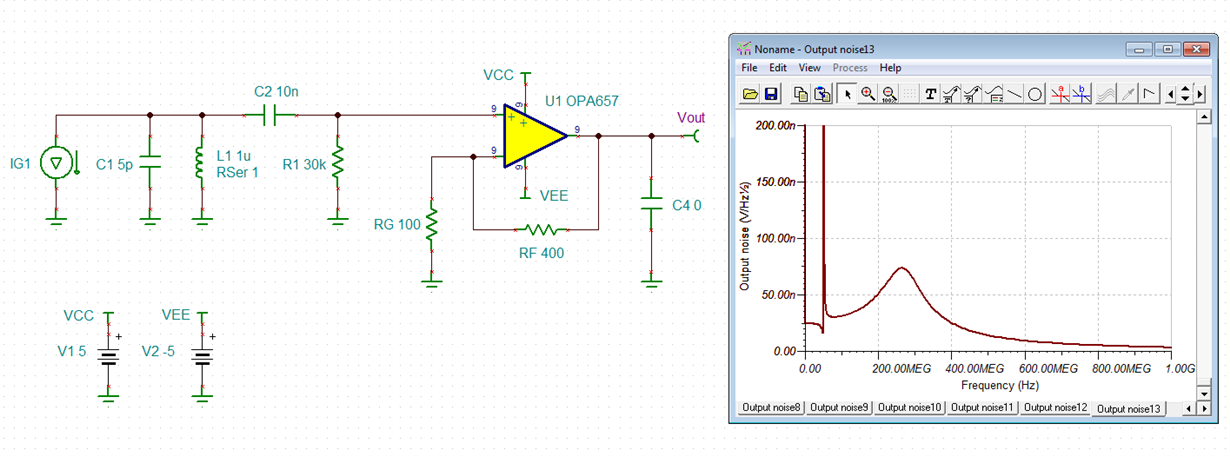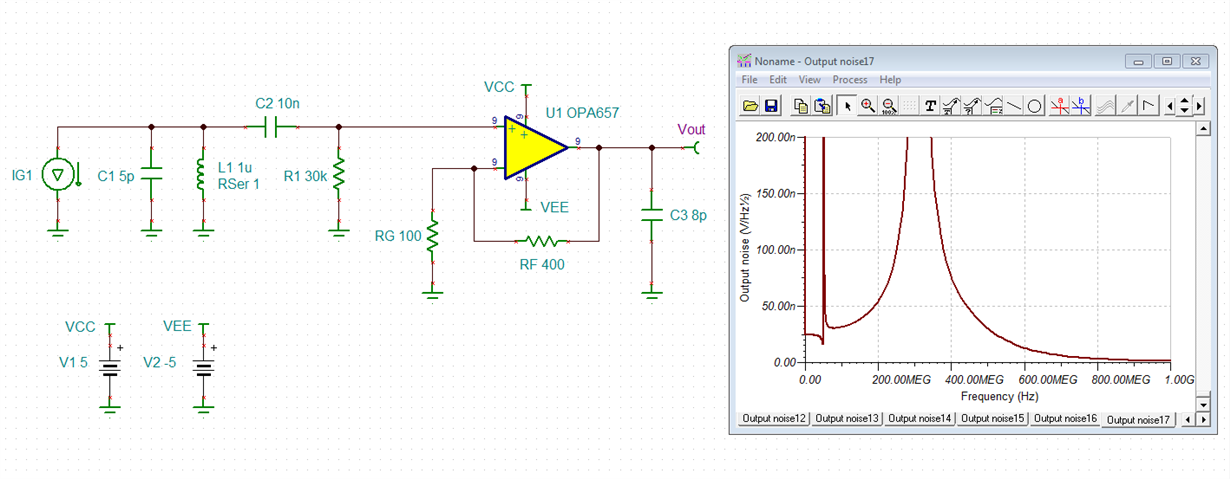Other Parts Discussed in Thread: TINA-TI,
Tool/software: TINA-TI or Spice Models
Hi,
I am trying to build a resonant photodiode with an operational freqeuency between 50-100 MHz with low input referred current noise (<1pA/sqrt(Hz). Using the opa657, my spice model shows it should be possible reach the thermal noise limit of ~0.8pA/sqrt(Hz) set by the 30k resistor (See schematic below), but in practice I measure noise at the 5 pA/sqrt(Hz) level. Care was taken to minimize feedback path lengths and reduce parasitic capactitance and the board is also enlcosed in a grounded case. I am just wondering if I may have overlooked something in my design. Any input would be greatly appreciated, thanks in advance.
-William



